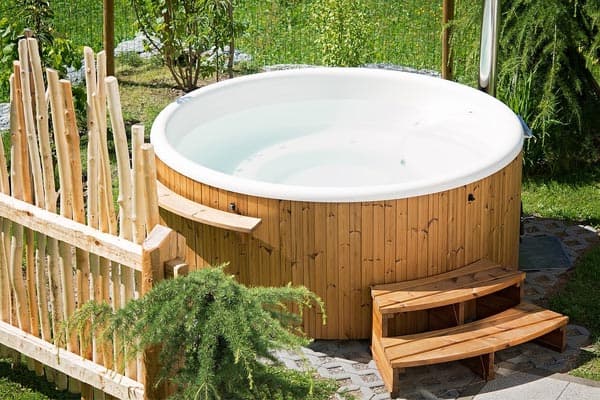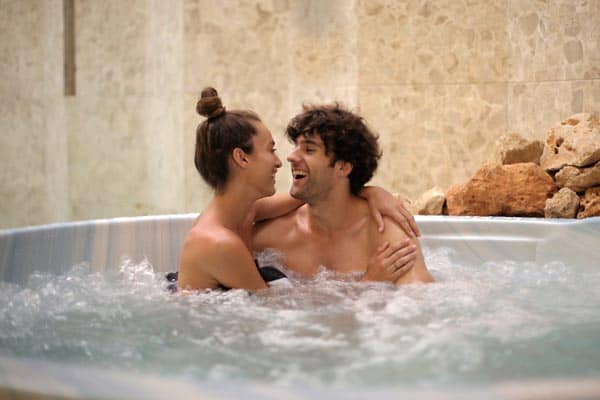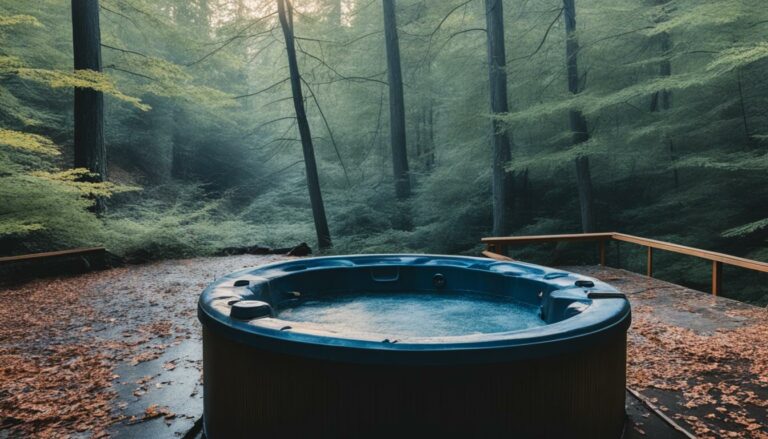How to Figure Out if You Need a Permit for a Hot Tub
If you’re considering installing a hot tub on your property, or you’ve already ordered, and you are waiting for it to get to you, the last thing on your mind is permits.
However, it’s essential that you consider your hot tub permit situation before you get it. Doing so will ensure that you stay up with the most current codes, avoid violations, and don’t have to worry about fines.
Do you need a permit for a hot tub?
The first thing you should know is that the building codes will vary from state to state, but you’ll usually only need a building permit if your hot tub or pool has a capacity of 5,000 gallons and up.
This will exempt most hot tubs from requiring permits for the hot tub itself, but there are other permits you have to consider.
You’ll need an electrical permit to install any lights, pumps, filters, or any equipment that is either directly connected or traditional cord-and-plug connected.
You will most likely need a plumbing permit to ensure you adhere to building codes and plumbing hook-ups.
State-Specific Permit Requirements
Along with the general requirements you have to consider when you’re trying to figure out what permits you need, you have to realize that each state has specific requirements for hot tubs and pools installed at residential properties.
So, it’s a good idea to check with your local town or city zoning office to see which requirements your state has. A few examples include:
- Distance From Your Property Line – In states like Minnesota or California, it’s required to put your hot tub in a space that is at least five feet from your property line or more. The last thing you want to do is set it up and have to drain it to move it again and risk damaging anything.
- Presence of Safety Barriers – Many states require that your hot tub has a safety barrier erected around it. For example, Washington state requirements say that you have to have a safety barrier equipped with a self-latching gate around the hot tub if it’s two feet or deeper.
- Restrictions on Filling the Hot Tub – In California, prohibitions on a state and city level stops hot tub owners from draining and refilling their hot tubs regularly. You can only do this if there is a sanitary issue or leak.
- Safety Measure Choices – Florida offers hot tub owners the choice of which safety measure they want to implement. They require people to incorporate either a cover, exit alarm, or a safety barrier that is at least four feet high.
Custom Hot Tubs Versus Prefabricated Hot Tubs
You’ll find that most cities or states don’t require most hot tubs to have a building permit if they fall under a certain size or capacity.
So, if you want to install an average-sized hot tub above the ground, you most likely won’t need to go get a building permit for the hot tub itself.
However, if you plan to install a hot tub in the ground or you want a custom-built hot tub, you’ll most likely need to get a building permit from your local zoning office.
Plumbing
No matter if you want an in-ground or above-ground hot tub, you’ll need a permit to complete the plumbing on your hot tub.
Ideally, you’ll bring in professional help to complete this process to ensure that everything is correct, and your plumber should take the time to double-check that the water supply lines meet the current codes. If they don’t, the plumber may have to re-run the lines and drive your prices up.
Electrical
For your safety, it’s essential that your hot tub’s electrical works correctly with your electrical system, and this is why you should hire a professional electrician when it comes time to hook it up during your install.
The electrician will install a 240-volt, 50-amp neutrally protected Ground Fault Circuit Interrupter on your hot tub, and the interrupter has to be adjacent to your hot tub on an outside wall spaced at least five feet from any other water source or your hot tub.
If you want to get a good idea of the placement, get a tape measure and measure the distance from wherever you want your hot tub to the main breaker box in your home.
You should also take note of your home has a dedicated 50-amp breaker located in the main breaker box or not. If it doesn’t, your electrician has to install one to handle the electrical load of the hot tub, and this is why you require electrical permits and a professional.
Additional Structures
A lot of people want to put their hot tubs into a structure like a gazebo or on their patio or deck. While you are free to do this with your new hot tub, you do want to keep in mind that both scenarios do require additional building permits.
Most areas require that decks have building permits, and many states have regulations that state many accessory structures like a gazebo have a building permit if it goes over certain square footage.
Building Codes for Hot Tubs
Take steps to ensure that your hot tub installation stays inside all of the local electrical, plumbing, and building codes.
You may need to get a building permit before you start the installation process, and this can take a few weeks after you fill out the application and pay the fee to get it.
Also, double-check your placement to ensure that it’s far enough from your property line to stay on the good side of your local zoning office, and this can be as close to five feet to your property line in some states.
If your hot tub is in-ground and has a top that is flush with the ground, you’ll measure the hot tub like you would a swimming pool to ensure it’s far enough away from your property line.
Another point many building authorities agree on is that you need to have a fence or another type of approved safety barrier erected around your hot tub, and the fence requirements are similar to those of a traditional pool enclosure.
An approved hot tub cover could double as a safety barrier in some areas.
Placement Rules and Regulations
Your hot tub has to go on a stable surface that won’t sink under the weight over time, and installing a concrete slab is the ideal solution.
However, this is both time-consuming and expensive, and you’ll have to have a minimum of a four-inch reinforced concrete base that can support 120-pounds for every square foot.
Crushed rock or gravel will also work if the concrete isn’t feasible, but you need to firmly compact the ground underneath it to ensure it can easily drain water. You should include space for a walkway around the perimeter too.
Water Source
You don’t need a dedicated water source or special plumbing to fill up your hot tub, but you do have to pay attention to regional, local, or statewide water restrictions.
All you need is some patience, a reliable water supply, and a long garden hose to fill or top up your hot tub. You could also collect rainwater and use it if you have a more strict water restriction in place.
Bottom Line
Chances are, you will need at least one or two permits for your hot tub when it comes time to install it because it’s best to bring in professionals than attempt to do it yourself.
Make sure you give yourself adequate time to obtain your permits before you start the installation process to ensure you don’t have any long and costly delays.







